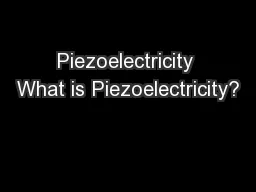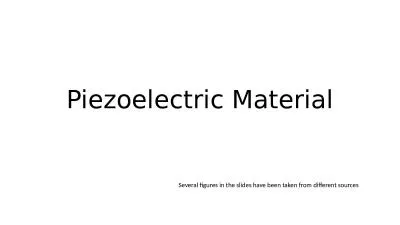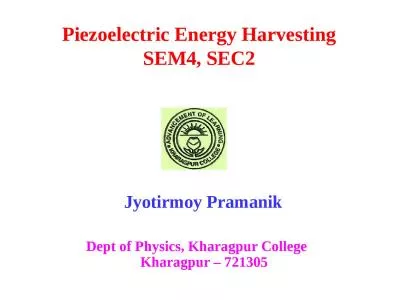PPT-Piezoelectricity What is Piezoelectricity?
Author : marina-yarberry | Published Date : 2018-09-30
Piezoelectric materials are produce an electric voltage when deformed mechanicallysuch as by squeezing or tapping The reverse effect is also true If we apply a
Presentation Embed Code
Download Presentation
Download Presentation The PPT/PDF document "Piezoelectricity What is Piezoelectricit..." is the property of its rightful owner. Permission is granted to download and print the materials on this website for personal, non-commercial use only, and to display it on your personal computer provided you do not modify the materials and that you retain all copyright notices contained in the materials. By downloading content from our website, you accept the terms of this agreement.
Piezoelectricity What is Piezoelectricity?: Transcript
Download Rules Of Document
"Piezoelectricity What is Piezoelectricity?"The content belongs to its owner. You may download and print it for personal use, without modification, and keep all copyright notices. By downloading, you agree to these terms.
Related Documents



